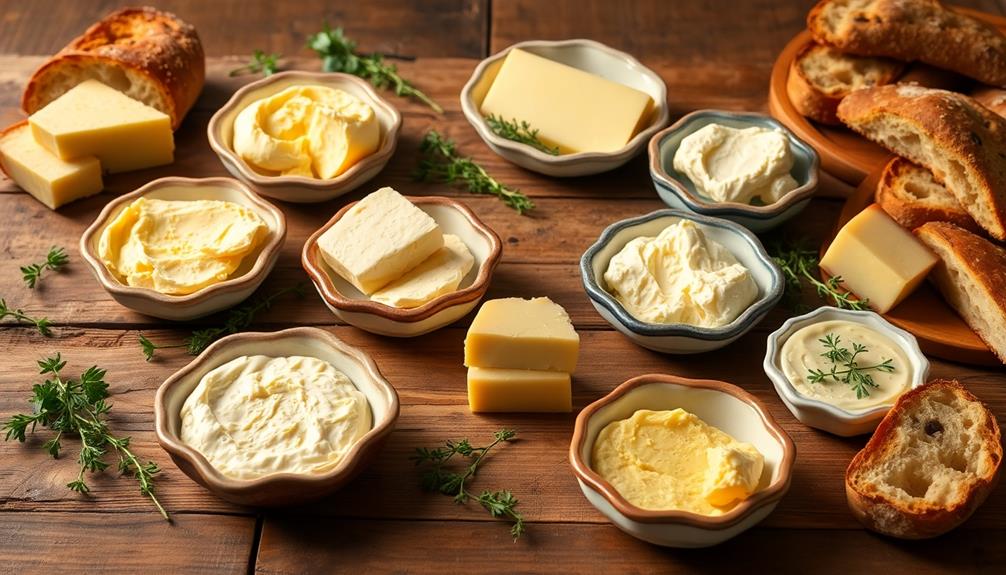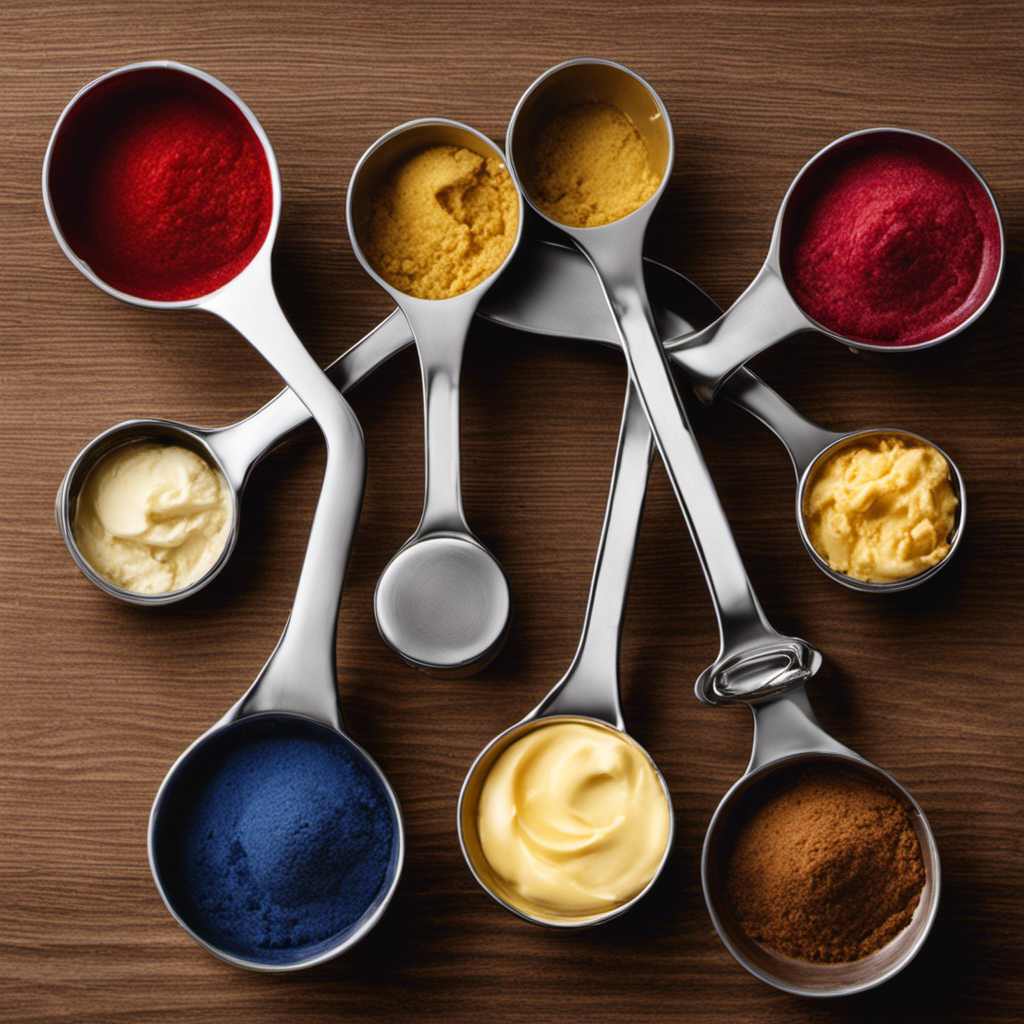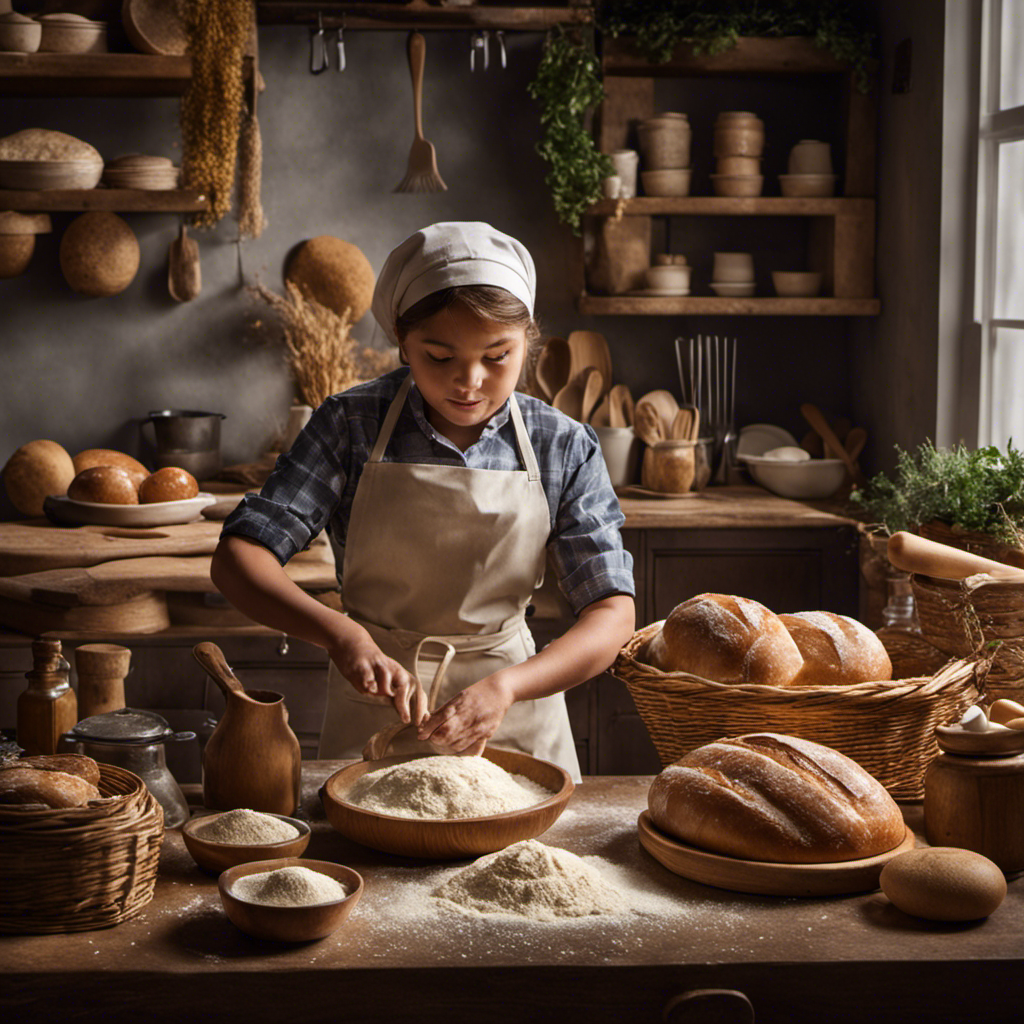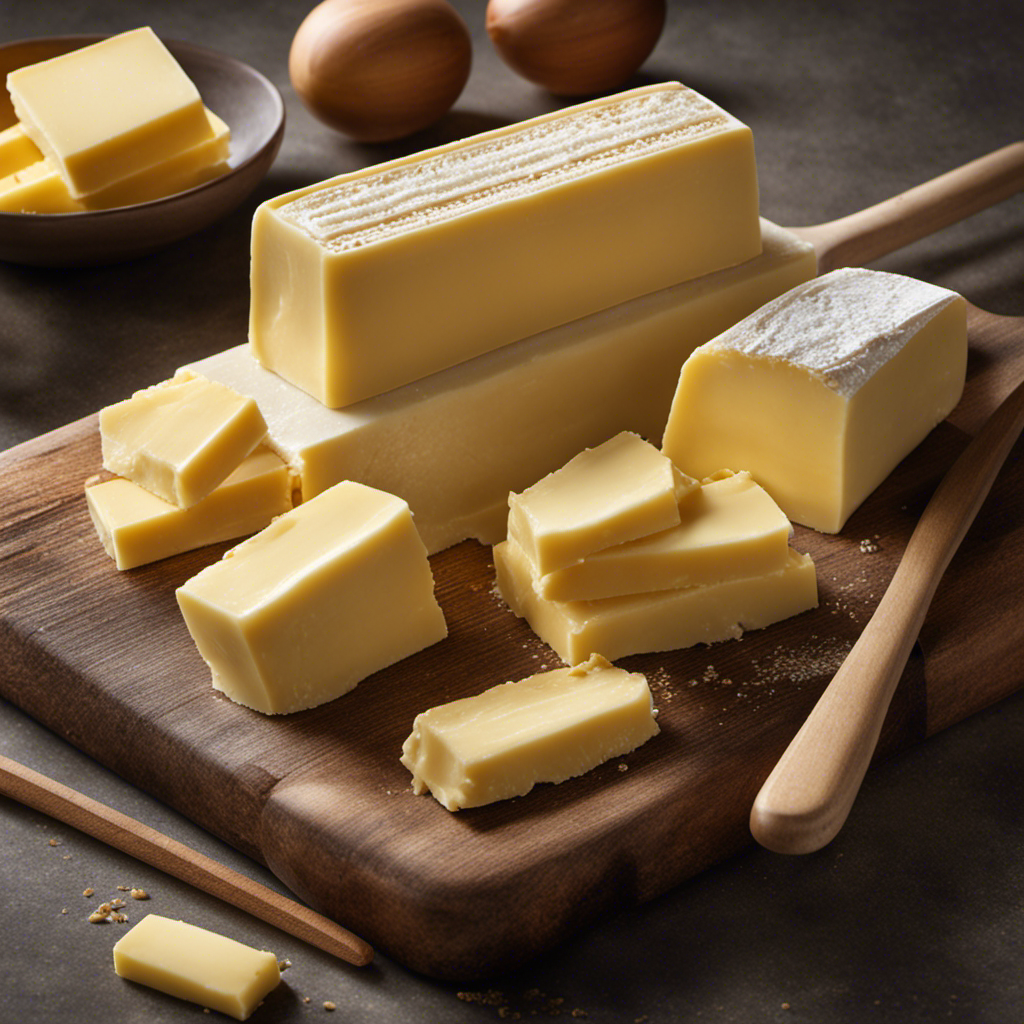European Protected Designation Butters are your gateway to authentic culinary experiences, showcasing regional pride. These butters adhere to strict quality regulations, ensuring every bite reflects heritage and tradition. From the rich creaminess of French varieties to the unique flavors of Italian selections, each butter offers a depth that mass-produced options lack. You'll discover diverse culinary uses, whether for sautéing or baking, and pairing suggestions that elevate your meals. Explore the importance of authenticity in these butters and how they support local producers. There's so much more to uncover about these exquisite products and their flavorful journeys.
Key Takeaways
- Protected Designation of Origin (PDO) ensures authenticity and quality of butters tied to specific European regions and traditional production methods.
- Renowned French butters like Beurre d'Isigny and Beurre de Bresse offer unique flavors, enhancing culinary dishes with rich heritage.
- Italian varieties such as Burro di Malga and Burro di Puglia showcase diverse regional flavors, reflecting Italy's rich culinary traditions.
- Culinary uses of PDO butters include sautéing, baking, and finishing dishes, elevating flavors and textures in gourmet cooking.
- Pairing suggestions with cheeses, breads, and fruits enhance the tasting experience, showcasing the distinctive qualities of each butter.
Understanding Protected Designation of Origin
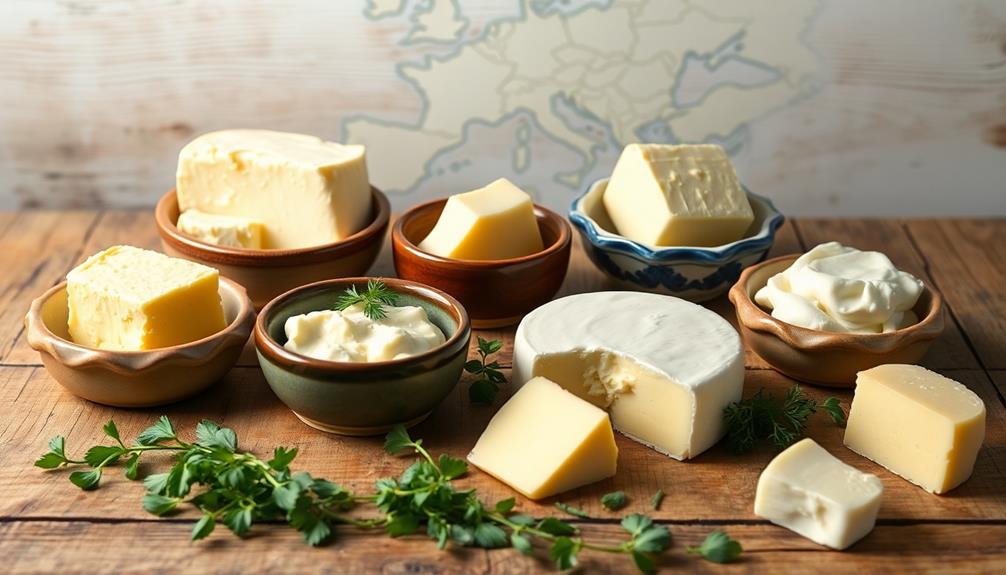
When you hear the term Protected Designation of Origin (PDO), think of it as a badge of honor for certain food products. This designation guarantees that a product is authentically tied to a specific region, using traditional methods and local ingredients.
It's your assurance that what you're buying isn't just any butter, but a high-quality product that reflects the unique characteristics of its origin.
PDO status isn't given lightly. Producers must adhere to strict regulations that cover every aspect of production, from the farming techniques to the processing methods.
When you choose a PDO product, you're not just savoring its rich flavors; you're also supporting local farmers and artisans who've dedicated themselves to maintaining these time-honored practices.
Understanding PDO can enhance your culinary experiences. You'll appreciate the nuances and qualities that come from specific regions, whether it's the unique taste derived from local feed or the traditional churning methods that create a distinct texture.
So, the next time you reach for a butter labeled with a PDO, remember that you're indulging in a product with deep roots and a story to tell.
It's more than just butter; it's a piece of cultural heritage.
Famous European Butters
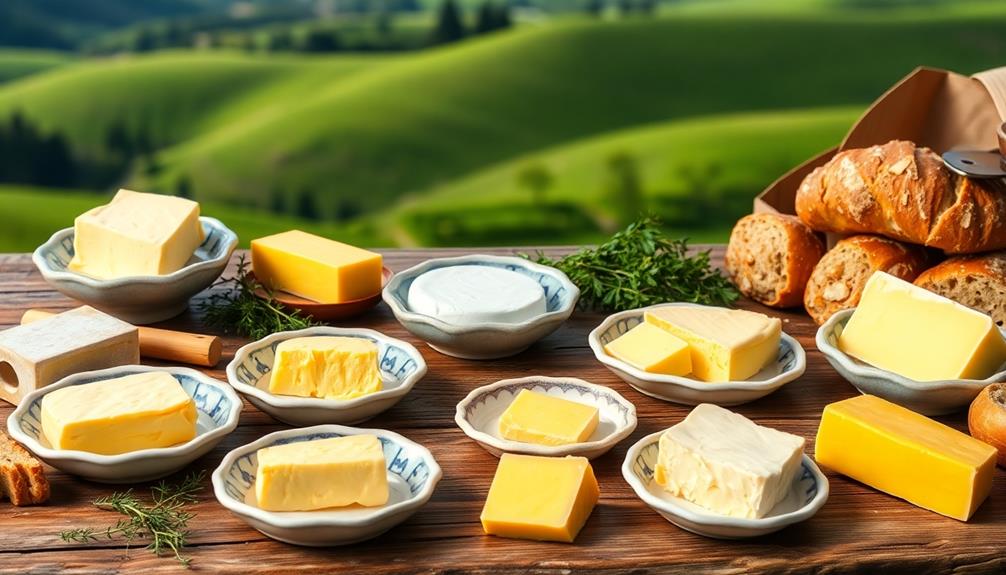
When you think of famous European butters, your mind probably jumps to renowned French varieties that are rich and creamy.
Don't forget about traditional Italian options that showcase unique regional flavors, each with its own character.
From the silky spreads of Normandy to the robust tastes of the Italian countryside, there's a lot to explore!
Renowned French Butters
Have you ever wondered what makes French butters so special? French butters, particularly those protected by designation, stand out due to their rich flavor, creamy texture, and high-quality ingredients. The careful production methods, often involving traditional churning techniques, contribute to their unique characteristics.
Here's a quick look at some renowned French butters you might want to try:
| Butter Name | Unique Feature |
|---|---|
| Beurre d'Isigny | Rich in flavor with a nutty aroma |
| Beurre de Charentes | Creamy texture, slightly tangy |
| Beurre de Bresse | Unique production from Bresse cows |
Each of these butters brings something special to the table, enhancing your culinary creations. Whether you're spreading it on fresh bread or using it in a sauce, the quality shines through. By choosing these protected designations, you're not just enjoying a product; you're experiencing a piece of French heritage. So, next time you're at the market, look for these renowned butters and elevate your dishes with their exquisite taste!
Traditional Italian Varieties
Traditional Italian butters offer a delightful contrast to their French counterparts, showcasing distinct flavors and production methods that reflect Italy's rich culinary heritage.
One of the most notable varieties is Burro di Malga, or mountain butter, made from the milk of cows grazing in high-altitude pastures. This butter boasts a rich, creamy texture and a slightly nutty flavor, perfect for enhancing rustic dishes.
You might also encounter Burro delle Alpi, a product from the Alpine regions, known for its deep yellow color and aromatic profile. This butter undergoes a slow churning process, which develops its unique taste and makes it ideal for baking traditional Italian pastries.
Another famed option is Burro di Puglia, which captures the essence of Southern Italy. This butter is characterized by its lightness and subtle sweetness, making it a fantastic choice for spreading on fresh bread or drizzling over vegetables.
When you explore traditional Italian butters, you'll discover a world of flavor that elevates your culinary creations. Each variety tells a story, connecting you to Italy's diverse landscapes and time-honored practices.
Unique Regional Specialties
Exploring the unique regional specialties of European butters reveals a tapestry of flavors and textures that reflect the diverse culinary landscapes of the continent.
Each region boasts its own distinct butter, often tied to local traditions and ingredients. You'll find that these butters do more than just enhance your dishes; they tell a story of the land and its people.
Consider trying these famous European butters:
- Demi-Sel Butter (France): This lightly salted butter enhances pastries and seafood with its rich, creamy texture.
- Irish Butter: Known for its deep yellow color and sweet, grassy flavor, it's perfect for spreading on warm bread.
- Kerry Gold Butter (Ireland): Made from grass-fed cows, it's celebrated for its creamy consistency and exceptional taste.
- Ghee (India): While not European, it influences many European fusion dishes with its nutty flavor and high smoke point.
- Scottish Butter: Often infused with local sea salt, it offers a unique briny taste that complements traditional Scottish fare.
These butters invite you to savor each bite, connecting you to the rich heritage of European cuisine.
The Making Process of Butters
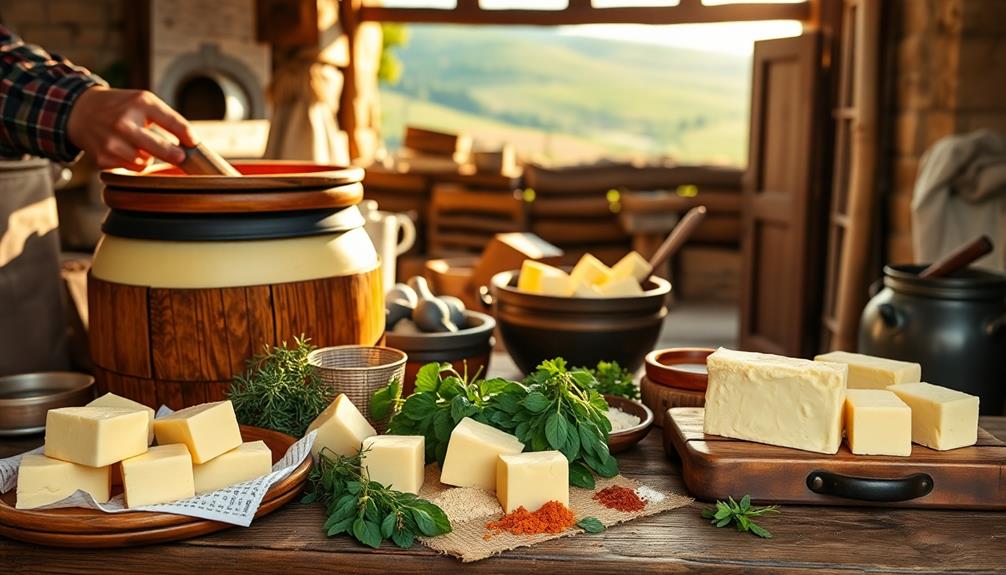
Crafting butters involves a meticulous process that highlights the unique flavors and qualities of the ingredients used. To start, you'll need to select high-quality cream, often sourced from local farms, guaranteeing it's fresh and rich in flavor. This process can considerably enhance the final product's richness, as seen in butter's fat content and types.
Then, you'll pasteurize the cream, which helps eliminate any unwanted bacteria and enhances the taste.
Once the cream is ready, you'll churn it in a traditional butter churn or a modern machine. This process agitates the cream, causing the fat globules to clump together and eventually separate from the buttermilk. You'll need to keep an eye on the churning time, as it affects the butter's texture and consistency.
After you've achieved the desired consistency, you'll wash the butter to remove any remaining buttermilk, which helps prolong its shelf life.
Next, you can add salt or other natural flavorings, depending on the type of butter you're making. Finally, you'll shape and package the butter, keeping it cool to maintain its quality.
This careful process guarantees that each batch of butter reflects the character and essence of its ingredients, resulting in a truly special product.
Culinary Uses of Protected Butters
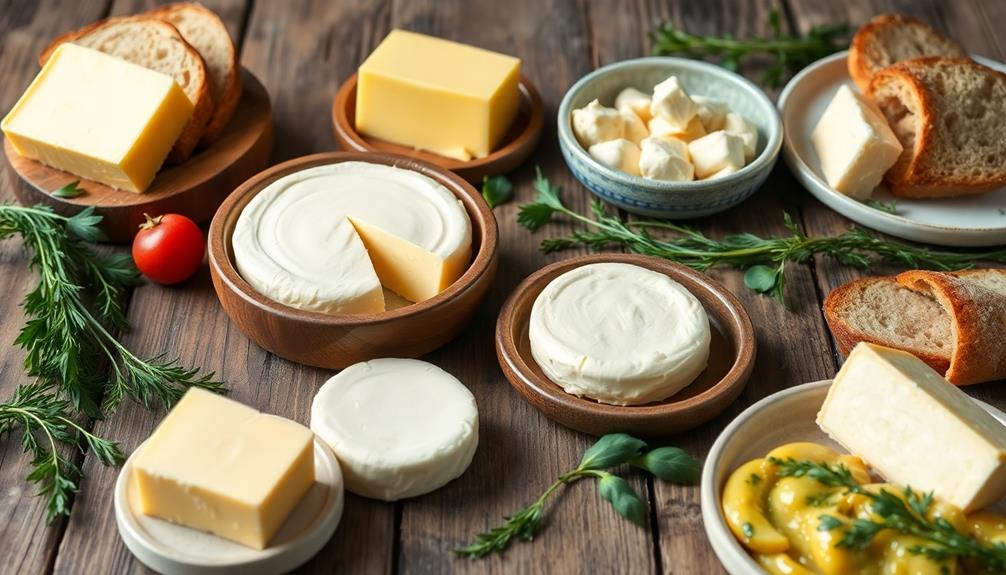
The versatility of protected butters opens up a world of culinary possibilities. You can incorporate these rich, flavorful butters into your dishes to elevate them to new heights. From savory sauces to decadent desserts, protected butters can enhance your cooking experience and impress your guests.
Here are some culinary uses to reflect on:
- Sautéing: Use them as a base for sautéing vegetables, adding depth and richness to your dishes.
- Baking: Substitute regular butter with protected varieties in your baking for a unique flavor profile in cookies or pastries.
- Sauces: Whisk them into sauces for meats or seafood to create a luxurious, velvety texture.
- Finishing Touch: Add a pat of protected butter to finished dishes, like steaks or vegetables, for a burst of flavor.
- Spreads: Serve them as gourmet spreads on fresh bread or crackers, showcasing their distinctive qualities.
Pairing Suggestions for Butters
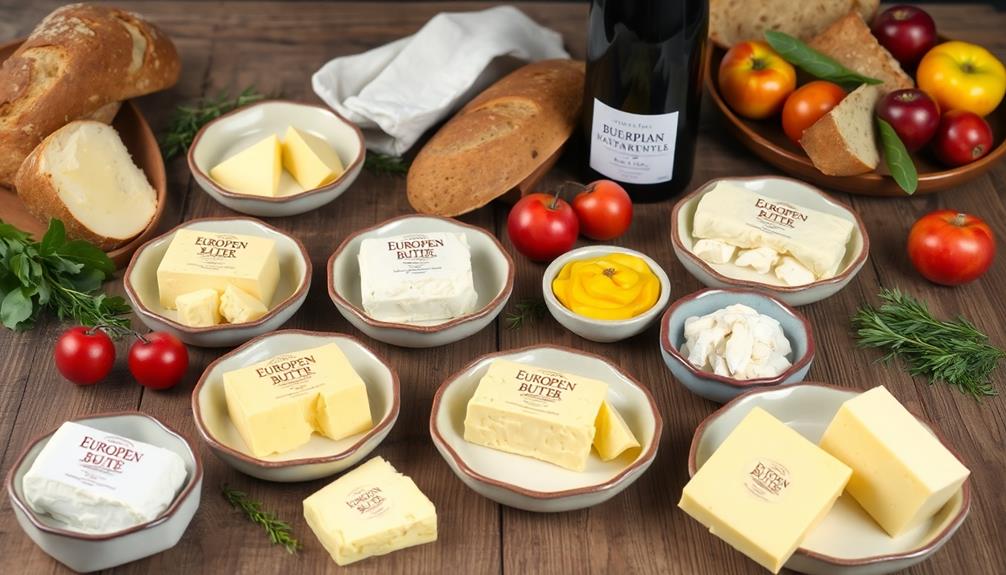
When you think about enjoying European protected butters, pairing them with the right accompaniments can elevate your experience.
Consider how different cheeses, breads, and even fruits can complement the unique flavors of these butters.
Let's explore some delicious pairing suggestions that will enhance your culinary creations.
Cheese Pairing Recommendations
Pairing cheese with butters can elevate your culinary experience, creating a delightful contrast of flavors and textures.
When you mix the rich, creamy qualities of butters with various cheeses, you'll discover unique taste combinations that enhance each element.
Additionally, just like the importance of educational toys in fostering development, the synergy of cheese and butter can enhance your overall dining experience.
Here are some recommendations to guide your pairings:
- Brie with Truffle Butter: The earthy notes of truffle butter complement the creaminess of Brie, creating a luxurious bite.
- Aged Cheddar with Herb Butter: The sharpness of aged cheddar pairs wonderfully with the freshness of herb-infused butter, adding depth to each mouthful.
- Goat Cheese with Honey Butter: The tangy flavor of goat cheese is beautifully balanced by the sweetness of honey butter, making for a delightful spread.
- Gorgonzola with Garlic Butter: The boldness of Gorgonzola finds harmony with the savory notes of garlic butter, giving your palate a robust experience.
- Camembert with Sea Salt Butter: The subtle saltiness enhances the soft richness of Camembert, making every bite pleasurable.
Experiment with these pairings to discover your favorites, and enjoy the harmonious balance that cheese and butter can create together!
Bread and Toast Combinations
Exploring the world of butters doesn't have to stop at cheese; it can also enhance your bread and toast experience. The right butter can elevate simple carbohydrates into a delightful treat.
Try spreading a rich, creamy French beurre on a warm baguette. The buttery taste complements the crusty exterior and soft interior perfectly, making it a classic pairing with butter's creamy texture.
For a breakfast classic, slather some Irish butter on a slice of toasted soda bread. Its slightly tangy flavor pairs beautifully with the bread's dense texture.
If you're in the mood for something sweet, consider using a flavored butter, like honey or cinnamon, on a slice of brioche. The sweetness will provide a lovely contrast, making your morning toast feel indulgent.
Don't overlook the rustic charm of whole grain bread. A dollop of nutty, herbed butter can enhance its earthy notes, giving your toast a gourmet twist.
Additionally, experimenting with garlic butter on crusty Italian bread can turn your toast into a savory delight, perfect for any meal.
No matter the choice, remember to fully enjoy the rich flavors and textures that European butters bring to your favorite breads and toasts!
Fruit and Jam Matches
Finding the perfect fruit or jam to pair with your butter can elevate your breakfast or snack to new heights. The right combination not only enhances the flavor but also complements the creamy texture of the butter.
Here are some pairing suggestions that'll delight your taste buds:
- Strawberry Jam: Its sweetness balances beautifully with the rich, nutty flavor of European butters.
- Apricot Preserves: The tangy notes elevate the buttery taste, making it a great match for morning toast.
- Blackberry Compote: The tartness cuts through the richness, offering a rejuvenating contrast.
- Honey and Lemon Zest: This duo adds brightness and a floral touch, enhancing the overall experience.
- Fig Spread: The deep, complex flavors of figs create a luxurious pairing that's hard to resist.
Experimenting with these fruit and jam options can transform your meals into something special.
The Importance of Authenticity
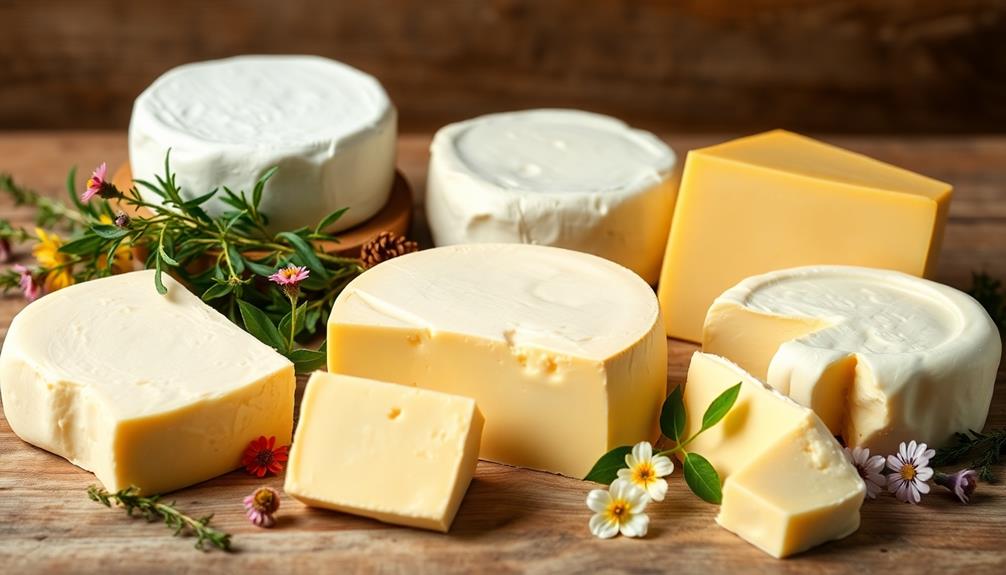
Authenticity matters more than ever in today's culinary landscape, especially when it comes to European Protected Designation Butters. When you reach for a butter labeled with a protected designation, you're not just choosing a product; you're embracing a rich heritage and tradition.
These butters are crafted using specific methods, ingredients, and geographical practices that reflect their unique origins. You'll find that authentic European butters offer distinct flavors and textures that mass-produced alternatives simply can't replicate.
When you cook or bake with these butters, you elevate your dishes, infusing them with a depth that speaks to their provenance. By choosing authentic products, you support local farmers and artisans who pour their passion into every batch, preserving age-old techniques that might otherwise be lost.
Moreover, authenticity guarantees you're getting the highest quality. Look for certifications like AOP (Appellation d'Origine Protégée) or PDO (Protected Designation of Origin) to ensure that what you're purchasing meets strict standards.
Frequently Asked Questions
What Are the Legal Requirements for a Butter to Be Protected?
To protect butter legally, it must meet specific standards for production, origin, and quality. You'll need to guarantee it adheres to regulations set by relevant authorities and undergoes necessary inspections for certification.
How Can I Identify Authentic European Protected Butters in Stores?
To identify authentic European protected butters in stores, look for labels featuring specific designations, certifications, or seals. Checking the packaging for these indicators guarantees you're choosing high-quality products that meet stringent standards.
Are There Any Health Benefits Associated With Protected Designation Butters?
Imagine savoring a rich, creamy butter that not only delights your taste buds but also offers vitamins and healthy fats. You'll find that authentic butters can support heart health and enhance your cooking, too.
Can I Find Protected Butters Outside of Europe?
Yes, you can find protected butters outside of Europe, but it might be challenging. Specialty stores or online retailers often carry them. Just check the labels to verify they meet the protected designation standards.
Is There a Difference in Price Between Protected and Non-Protected Butters?
Think of buying gourmet cheese versus regular cheddar. You'll notice protected butters often cost more due to quality and exclusivity. So, yes, there's generally a price difference between protected and non-protected butters you'll find.
Conclusion
In the world of culinary delights, European protected butters are like treasures waiting to be discovered. Their rich flavors and unique qualities elevate any dish, transforming the ordinary into the extraordinary. By choosing these authentic butters, you not only support traditional craftsmanship but also indulge in a taste that's steeped in history. So, the next time you reach for butter, let it be a passport to a flavorful journey across Europe's finest regions. Enjoy every bite!
